UPSC Daily Current Affairs: 9th February 2025 | Current Affairs & Hindu Analysis: Daily, Weekly & Monthly PDF Download
GS1/Geography
Cayman Islands Earthquake Overview
Source: Times Now
Why in News?
A recent magnitude-7.6 earthquake struck the Caribbean Sea, located southwest of the Cayman Islands, as reported by the U.S. Geological Survey. This seismic event has raised concerns about the geological activity in this region.
- The Cayman Islands are a British overseas territory situated south of Cuba and northwest of Jamaica.
- This territory comprises three main islands: Grand Cayman, Cayman Brac, and Little Cayman.
- The Cayman Ridge, an extensive underwater mountain range, is responsible for the formation of these islands.
- Grand Cayman is the largest and most populated island in the territory.
- The total area of the Cayman Islands is approximately 264 square kilometers.
Additional Details
- Capital: The capital city of the Cayman Islands is George Town, located on Grand Cayman.
- Official Language: English is the official language spoken throughout the islands.
- Currency: The local currency is the Cayman Islands Dollar (KYD).
- Demographics: The ethnic composition includes 40% Afro-European, 20% African, 20% European, and 20% from other groups.
- The islands are renowned for their stunning coral reefs, crystal-clear waters, and pristine white sand beaches, making them a popular tourist destination.
This earthquake serves as a reminder of the geological dynamics in the Caribbean region, highlighting the importance of monitoring seismic activities in such areas.
GS3/Environment
Vishwamitri River and Its Crocodile Census
Source: Indian Express
Why in News?
The Gujarat Ecological Education and Research (GEER) has initiated an analysis of data gathered from a crocodile census conducted along a 25-km urban stretch of the Vishwamitri River that flows through Vadodara city. This census is significant for understanding the ecological health of the river and its unique ecosystem.
- The Vishwamitri River originates from the Pavagadh hills in Gujarat.
- It is primarily rain-fed and meanders through Vadodara before draining into the Gulf of Kambhat, culminating in the Bharuch district.
- This river is known for its unique ecosystem, which includes a large population of mugger or marsh crocodiles (Crocodylus palustris).
Additional Details
- Vishwamitri River: The river is linked to two tributaries, Dhadhar and Jambuva, and flows through a highly sinuous pathway, creating a variety of beautiful ravines along its course.
- Mugger Crocodiles: These crocodiles are one of the 24 extant species of crocodilians found globally. They thrive in freshwater habitats such as marshes, lakes, rivers, and artificial ponds.
- Distribution in India: Mugger crocodiles are found in 15 states, with significant populations in the middle Ganges (Bihar-Jharkhand) and Chambal (Madhya Pradesh, Gujarat, and Rajasthan) basins. They are also found in neighboring countries including Pakistan, Sri Lanka, Nepal, and Bangladesh as well as in southeastern Iran.
- Conservation Status: Classified as Vulnerable by the IUCN and listed in Appendix I of CITES, highlighting the need for conservation efforts.
The ongoing analysis of crocodile populations in the Vishwamitri River will provide valuable insights into the river's ecological status and the effectiveness of conservation measures in place for these vulnerable species.
GS2/Polity
Article 22 of the Constitution of India
Source: Indian Express
Why in News?
The Supreme Court of India has recently emphasized that the requirement under Article 22(1) to inform an arrested individual about the grounds for their arrest is not merely a procedural formality but a mandatory constitutional obligation. Failure to comply will render the arrest illegal.
- Article 22 provides critical protections against arbitrary arrest and detention.
- These protections apply to all individuals, including non-citizens, but not to enemy aliens.
- Specific provisions detail the rights of arrested persons and the limitations on preventive detention.
Additional Details
- Article 22(1): No individual can be arrested or detained without being informed of the reasons for such actions. They are entitled to consult and be defended by a legal practitioner of their choice.
- Article 22(2): An arrested individual must be presented before the nearest Magistrate within 24 hours of arrest, excluding the time taken to travel from the arrest location to the court. Detention beyond this period requires Magistrate's permission.
- Article 22(3): This clause exempts certain individuals, such as enemy aliens or those arrested under preventive detention laws, from the protections outlined in clauses (1) and (2).
- Article 22(4): No person can be detained for more than three months under preventive detention laws unless the Advisory Board finds the detention justified.
- Article 22(5): It is mandatory to disclose the grounds of arrest to the detainee, who must also have the opportunity to challenge the detention order.
- Article 22(6): The detaining authority may withhold disclosure of facts that would be against public interest when informing the person of the grounds for detention.
- Article 22(7): Parliament has the authority to establish the conditions under which a person may be detained for more than three months without Advisory Board approval and to set maximum detention periods under preventive detention laws.
In summary, Article 22 of the Indian Constitution safeguards individuals from arbitrary arrest and detention, ensuring that fundamental legal rights are upheld. The Supreme Court’s ruling reinforces the importance of these protections in maintaining justice and accountability within law enforcement.
GS1/History & Culture
Dashavatar Theatre
Source: The Hindu
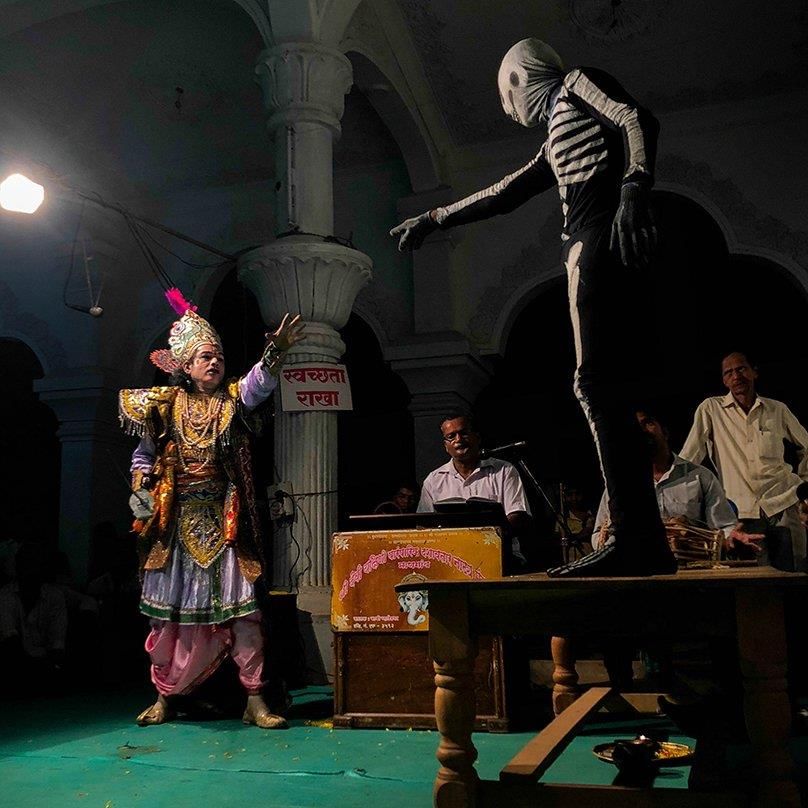 Why in News?
Why in News?
Recently, performances of Dashavatar theatre have commenced in the Maharashtra and North Goa regions, celebrating a rich cultural tradition.
- Dashavatar theatre has a historical legacy spanning over 800 years.
- This traditional folk theatre is predominantly performed in Maharashtra and Northern Goa.
- The narratives revolve around the 10 incarnations of Vishnu.
- The theatre season starts post the paddy harvest, around the end of the Navratri fast in October, and lasts until May.
- Musical elements play a crucial role, with instruments like the paddle harmonium, tabla, and zanj featured prominently.
Additional Details
- Traditional Themes: The stories portrayed in Dashavatar theatre depict the ten incarnations of Vishnu: Matsya, Koorma, Varaha, Narsimha, Wamana, Parashurama, Ram, Krishna, Buddha, and Kalki.
- Performance Style: The shows are largely musical, with occasional dialogues enhancing the narrative.
- The origins of Marathi theatre can be traced back to the Dashavatara tradition, highlighting its significance in the evolution of regional theatre.
Dashavatar theatre not only serves as a form of entertainment but also plays a vital role in preserving cultural heritage and storytelling traditions in Maharashtra and Goa.
GS2/Polity
National Assessment and Accreditation Council (NAAC) Halts Physical Inspections
Source: Times of India
Why in News?
The National Assessment and Accreditation Council (NAAC) has recently announced a suspension of physical inspections for colleges due to evolving circumstances and to adopt more modern inspection methodologies.
- NAAC was established in 1994 as an autonomous institution under the University Grants Commission (UGC).
- Its primary goal is to enhance the quality of higher education through a thorough accreditation process.
- Currently, accreditation by NAAC is voluntary for higher educational institutions.
Additional Details
- Assessment and Accreditation: NAAC assesses Higher Educational Institutions (HEIs) such as colleges and universities based on various parameters including curricular aspects, teaching-learning processes, infrastructure, governance, and innovation.
- Governance Structure: NAAC operates through a General Council (GC) and an Executive Committee (EC) composed of educational administrators, policymakers, and senior academicians from across the Indian higher education landscape.
- The Chairperson of the UGC serves as the President of the GC of NAAC, while the Chairperson of the EC is an eminent academician nominated by the GC President.
- NAAC is headquartered in Bengaluru.
This shift towards e-inspections marks a significant transformation in the accreditation process, emphasizing the need for adaptability in the current educational landscape.
GS3/Science and Technology
Chandrayaan-3’s Landing Region is About 3.7 Billion Years Old
Source: Indian Express
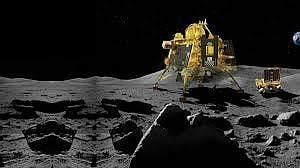 Why in News?
Why in News?
A recent study by scientists from ISRO has revealed that the landing site of Chandrayaan-3 on the Moon is approximately 3.7 billion years old. This timeframe coincides with the era when primitive microbial life is believed to have first emerged on Earth.
- ISRO's findings provide insights into the Moon's geological history and its evolution.
- The landing site, known as Shiv Shakti Point, is surrounded by significant craters.
- India became the first country to achieve a soft landing on the Moon's south pole in August 2023.
Additional Details
- Regional Geography:The landing site is encircled by several notable craters, including:
- Manzinus Crater: 96 km in diameter, approximately 3.9 billion years old, located to the north.
- Boguslawsky Crater: 95 km in diameter, about 4 billion years old, situated to the southeast.
- Schomberger Crater: 86 km in diameter, roughly 3.7 billion years old, positioned to the south.
- Significance of the Study: Understanding the Moon's violent history is crucial for future lunar exploration.
- ISRO’s Physical Research Laboratory (PRL) scientists conducted detailed studies using data collected from the Pragyan rover and Vikram lander, enhancing our understanding of the Moon's geological evolution.
- Advanced Imaging and Terrain Analysis: PRL employed high-resolution imaging techniques, utilizing the Lunar Reconnaissance Orbiter’s cameras to examine crater formations and rock distributions.
The findings from this study have been published in the journal Advances in Space Research. The research emphasizes the geological context necessary for interpreting data from lunar missions, improving our scientific understanding of the Moon's highlands, especially around the south pole. The study highlights the importance of mapping impact craters to determine the age of lunar landscapes and their evolution over billions of years.
GS3/Defence & Security
Klub-S Missile System
Source: MSN
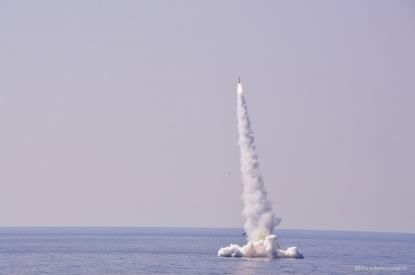 Why in News?
Why in News?
India has recently finalized an agreement with Russia to procure the Klub-S missile system, which aims to significantly bolster the operational capabilities of the Indian Navy's submarine fleet.
- The Klub-S missile system is developed by the Russian defense company NPO Novator.
- It is a cruise missile that was first inducted into the Russian defense forces in 1994.
- The missile has a warhead payload of 400 kilograms.
- Klub-S missiles can effectively engage surface ships, submarines, and ground targets at distances of up to 300 kilometers.
Additional Details
- System Components: The Klub-S system includes a fire control system, a vertical launcher unit (VLU), and necessary ammunition for operation.
- Combat Efficiency: It is recognized for its performance in high-risk combat scenarios, particularly where intense enemy fire and electronic warfare are prevalent.
- Speed and Maneuverability: The missile can reach supersonic speeds during its terminal phase, making it challenging for enemy defense systems to intercept.
- The missile operates at a low cruising altitude of 10-15 meters, which minimizes the reaction time available to enemy defenses.
This acquisition is expected to be a game-changer for the Indian Navy's submarine warfare capabilities, enhancing its strategic deterrence and operational effectiveness in maritime security.
GS2/Polity
National Commission for Scheduled Tribes: Recent Developments
Source: PIB
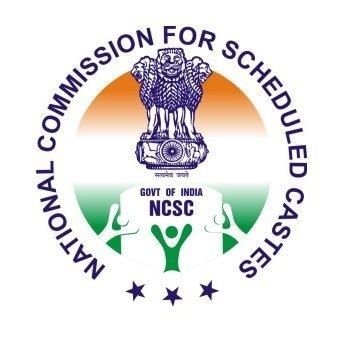 Why in News?
Why in News?
The National Commission for Scheduled Tribes (NCST) has requested the state governments of Telangana, Maharashtra, Andhra Pradesh, and Odisha to conduct surveys. The purpose of these surveys is to ascertain the exact number of tribal individuals who have been displaced from Chhattisgarh due to violence linked to Maoist activities.
- The NCST has asked for data collection on tribal displacement due to Maoist violence.
- States involved include Telangana, Maharashtra, Andhra Pradesh, and Odisha.
Additional Details
- About the National Commission for Scheduled Tribes: The NCST was established by amending Article 338 and incorporating a new Article 338A into the Constitution through the Constitution (89th Amendment) Act, 2003. This amendment led to the division of the erstwhile National Commission for Scheduled Castes and Scheduled Tribes into two separate bodies: the NCSC and the NCST.
- Composition: The NCST is composed of a Chairperson, a Vice-Chairperson, and three full-time members, including at least one female member. Their term of office is three years from the date of assuming charge. The Chairperson holds the rank of Union Cabinet Minister, while the Vice-Chairperson is designated as a Minister of State, and the other members hold the rank of Secretary to the Government of India.
- Functions: The NCST is responsible for monitoring safeguards for Scheduled Tribes (STs) under the Constitution and other laws, investigating specific complaints regarding ST rights, advising on socio-economic development planning, submitting annual reports to the President on welfare measures, and performing additional functions as specified by the President.
This initiative highlights the ongoing challenges faced by tribal communities affected by violence, emphasizing the need for accurate data to inform policy and support initiatives aimed at their welfare and rehabilitation.
GS3/Economy
Restructured National Bamboo Mission
Source: DTE
Why in News?
The recent announcement by the Minister of State for Agriculture and Farmers Welfare in the Lok Sabha highlighted the details of the restructured National Bamboo Mission, which aims to enhance bamboo cultivation and its related sectors in India.
- The restructured National Bamboo Mission was launched as a Centrally Sponsored Scheme in 2018-19.
- It provides assistance to both government and private sectors for bamboo propagation and cultivation.
- The funding pattern varies, with a 60:40 ratio for most states, and 90:10 for North Eastern and hilly states.
- Major objectives include improving the quality of planting materials and expanding bamboo cultivation areas.
Additional Details
- Funding Pattern:The funding is distributed as follows:
- 60:40 between the Centre and State Government for most states.
- 90:10 for North Eastern and hilly states.
- 100% funding for Union Territories and Bamboo Technology Support Groups (BTSGs).
- Major Objectives:
- To increase the availability of quality planting materials.
- To enhance post-harvest management and preservation technologies.
- To develop market infrastructure and promote skill development.
- To reduce dependency on the import of bamboo and related products.
- Implementation: The mission is implemented through state nodal departments nominated by the respective State/UT governments.
The restructured National Bamboo Mission represents a significant step towards promoting sustainable bamboo cultivation and increasing the economic viability of bamboo products in India.
GS2/Polity
Implications of BJP's Electoral Victory in Delhi - Constitutional and Governance Aspects
Source: Times of India
Why in News?
The recent electoral success of the Bharatiya Janata Party (BJP) in the Delhi elections marks a significant shift in the governance landscape of the national capital. This victory is anticipated to alleviate the persistent conflicts between the Aam Aadmi Party (AAP)-led Delhi government and the Central government regarding Delhi's distinctive constitutional status.
- The BJP's win suggests a potential alignment with the NDA-led Centre, leading to a "double-engine" government.
- There may be smoother governance due to reduced challenges to the Centre’s policies.
- Past conflicts over funding and bureaucratic appointments might be resolved more efficiently.
Additional Details
- Delhi’s Constitutional Status: Article 239AA of the Constitution, introduced by the 69th Amendment in 1991, outlines the special provisions for the National Capital Territory of Delhi. This article restricts the elected government's authority over key areas such as services, land, police, and public order.
- Supreme Court's Rulings: The Supreme Court has intervened in 2017 and 2023 to affirm the Delhi government's legislative and executive powers over administrative services. However, the Centre's amendment to the GNCTD Act in May 2023 expanded the Lieutenant Governor's influence over bureaucratic appointments.
- The BJP's governance is expected to facilitate quicker approvals for projects and funding decisions due to better cooperation between the Chief Minister and the Lieutenant Governor.
In conclusion, while the BJP's governance in Delhi may streamline administrative processes and enhance coordination with the Centre, it also raises important questions about the balance of power and the principles of federalism in India. The upcoming years will serve as a critical test for maintaining the integrity of Delhi's governance structure as outlined by the Supreme Court.
GS3/Economy
Potash Mining Exploration in Punjab
Source: Times of India
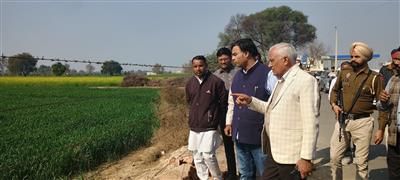 Why in News?
Why in News?
The recent statement by the Punjab Mining Minister highlighted the government's initiative to explore potash mining in the Fazilka and Sri Muktsar Sahib districts. This decision is based on previous surveys that identified significant mineral reserves in three different mining blocks in the region.
- Potash is an essential mineral, primarily used in fertilizers.
- Punjab has potential reserves, contributing to the agricultural sector.
- Different forms of potash fertilizers serve various agricultural needs.
Additional Details
- About Potash: Potash refers to various inorganic compounds containing potassium in a soluble form.
- Principal Ore: The main ore of potash is sylvinite, which is a combination of sylvite (KCl) and halite (NaCl).
- Usage: More than 90% of potash is utilized as fertilizer, being one of the three primary agricultural nutrients, alongside nitrogen and phosphorus (N-P-K).
- Forms of Potash Fertilizers:
- Sulphate of Potash (SOP): A premium fertilizer free of chloride, mainly used on high-value crops like leafy plants, fruits, and vegetables.
- Muriate of Potash (MOP): Contains chloride and is commonly used on carbohydrate-rich crops such as wheat.
- Global Potash Reserves: Major reserves are found in Canada (31%), Belarus (21%), Russia (11%), China (10%), USA (6%), Germany (4%), and Chile (3%).
- Potash Reserves in India: The most significant reserves are in Rajasthan, which contributes 89% of the total resources, followed by Punjab, Madhya Pradesh, and Uttar Pradesh.
The exploration of potash mining in Punjab presents an opportunity to enhance agricultural productivity in the region, leveraging local mineral resources effectively.
|
52 videos|5374 docs|1136 tests
|
FAQs on UPSC Daily Current Affairs: 9th February 2025 - Current Affairs & Hindu Analysis: Daily, Weekly & Monthly
| 1. What are the recent developments regarding the National Commission for Scheduled Tribes in India? |  |
| 2. How does the National Assessment and Accreditation Council (NAAC) impact higher education in India? |  |
| 3. What is the significance of the Dashavatar Theatre in Indian culture? |  |
| 4. What are the implications of the BJP's electoral victory in Delhi on constitutional governance? |  |
| 5. What are the key features of the Restructured National Bamboo Mission? |  |
















